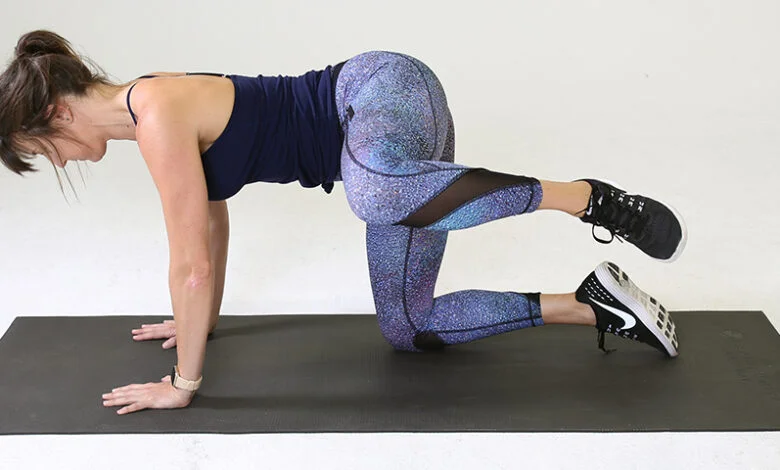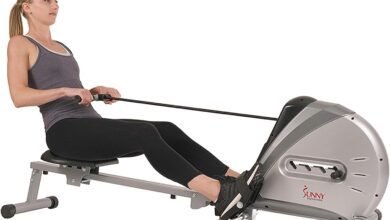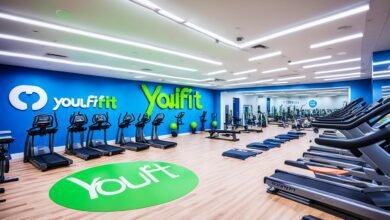Unleashing Fitness the Fire Hydrant Exercise

When sculpting a strong toned lower body the fire hydrant exercise stands out as a powerhouse move. While its name might evoke firefighting images this exercise isn’t about dousing flames it’s about igniting your workout routine with targeted strength and flexibility gains.
The Move Explained
The fire hydrant exercise often called the lateral leg raise primarily targets the hips, glutes and outer thighs. This is the way to perform it:
- Beginning Position: Start down on the ground adjusting your wrists underneath your shoulders and knees under your hips. Keep your center connected with and your spine unbiased.
- Execution: Lift one knee away from the body while keeping the foot flexed and the thigh lined up with the ground. Maintain a slow controlled movement. Ensure that the movement originates from the hip not from swinging the leg.
- Return: Lower the knee back down returning to the starting position. Play out the ideal number of redundancies on one side prior to changing to the next leg.
Advantages of Fire Hydrant Exercise
Targeted Muscle Engagement
The fire hydrant exercise successfully segregates and reinforces the gluteus medius and minimus muscles which are in many cases ignored in conventional lower-body exercises. These muscles assume a critical part in settling the pelvis and supporting hip developments.
Worked on Hip Versatility
Consistently integrating fire hydrant exercises into your routine can upgrade hip versatility and adaptability. This is especially helpful for athletes and people who want to increase their range of motion in sports that require lateral movements, such as running and dancing.
Prevention of Injuries
Stable hips and glutes improve stability and balance, lowering the likelihood of injuries, particularly to the knees and lower back. Fortifying these muscles can reduce stress on different pieces of the body during proactive tasks and everyday developments.
Variations and Progressions
Once comfortable with the basic fire hydrant exercise there are various ways to intensify and diversify the workout:
- Resistance Bands: Incorporating resistance bands around the thighs adds an extra challenge by increasing resistance throughout the movement.
- Weighted Variations: Holding a light dumbbell or ankle weights can further enhance the exercise’s difficulty.
- Combination Exercises: Pairing fire hydrants with other lower body exercises like squats or lunges in a circuit routine can amplify the overall lower body workout.
Tips for Success
To make the most of your fire hydrant exercise routine:
- Focus on Form: Maintain proper form throughout the movement to ensure optimal muscle engagement and reduce the risk of injury.
- Mind-Muscle Connection: Concentrate on engaging the targeted muscles with each repetition to maximize their activation.
- Consistency: Like any exercise, consistency is key. Plan to integrate fire hydrants into your routine consistently to see enhancements in strength and adaptability.
Fire Hydrant Exercises help Reduce Hip pain
A more in-depth explanation of the advantages of fire hydrant exercises and the significance of seeking medical attention for persistent hip pain can be found here:
Advantages of Fire Hydrant Activities:
- Muscle Fortifying: Fire hydrant exercises focus on the muscles around the hips explicitly the gluteus medius and minimus. Reinforcing these muscles can improve hip solidness and backing legitimate development designs.

- Improved Hip Mobility: By drawing in these muscles you can work on hip portability and scope of movement which is advantageous for different everyday exercises and sports execution.
- Lightening of Particular Kinds of Hip Torment: Some types of hip discomfort or pain may be alleviated by strengthening the surrounding muscles. This could be especially valid for torment coming from feeble or immature glute muscles adding to inappropriate hip arrangement.
When to Look for Clinical Exhortation:
- Constant Torment: In the event that you’re encountering persevering or constant hip torment counseling a medical care proficient for a legitimate diagnosis is critical.Persistent pain could indicate underlying issues that need specific attention and treatment beyond exercise.
- Appropriate Analysis: Your hip pain can be accurately diagnosed by a medical professional and the root cause may not only be muscle weakness. It could include joint issues, irritation, injury or other ailments that require specific consideration.
- Direction for Exercise: Looking for proficient direction takes into account custom fitted suggestions that think about your particular condition. They can exhort on practices that are protected and useful for your circumstance while staying away from exercises that could compound the issue.
Fire Hydrant Exercises be part
Here’s a detailed explanation of why fire hydrant exercises are valuable additions to a lower-body or glute-focused workout routine:
Complementary Nature of Fire Hydrant Exercises:
- Designated Muscle Commitment: Fire hydrant exercises explicitly focus on the glute muscles, especially the gluteus medius and minimus. This designated actuation supplements other lower body practices like squats and jumps which may prevalently draw in the gluteus maximus.
- Muscle Equilibrium: Consolidating fire hydrant exercises accomplishes a fair way to deal with working the whole gluteal district. While squats and jumps fundamentally draw in bigger muscle gatherings, fire hydrants center on more modest, settling muscles advancing generally speaking equilibrium and strength inside the glute complex.
- Upgraded Useful Development: These activities reproduce developments frequently utilized in everyday exercises or sports. Reinforcing the gluteus medius and minimus through fire hydrants adds to further developed solidness and control during developments including horizontal movement like strolling running or athletic moves.
- Fluctuated Muscle Feeling: Muscle adaptation and plateaus are avoided when a variety of exercises, such as fire hydrants are introduced. This variety challenges muscles in various ways encouraging nonstop development and advancement.
- Preventing Muscle Misalignments: Fire hydrant exercises can aid in the prevention of muscle imbalances by focusing on specific muscles that might not get enough use in standard lower-body workouts. This diminishes the gamble of wounds brought about by strength errors between muscle gatherings.
- Far reaching Glute Exercise routine Everyday practice: When joined with other lower body works out, fire hydrants add to a balanced glute-centered gym routine daily schedule advancing strength dependability and feel.
Incorporating Fire Hydrant Exercises:
- Frequency: Including fire hydrant exercises 2-3 times a week within a workout routine dedicated to lower body or glute development can yield significant benefits.
- Variation: Mixing fire hydrant exercises with other glute-targeting movements, such as bridges, hip thrusts or clamshells further diversifies the workout routine and maximizes glute activation.
- Progressive Overload: Gradually increasing the intensity repetitions or incorporating resistance bands can continually challenge the muscles and foster growth over time.
Fire Hydrant Exercises Noticeable Results
Here’s a detailed explanation of how fire hydrant exercises when combined with diverse workouts and a balanced diet contribute to noticeable results in toning and strengthening your glutes:
Significance of Assortment in Exercises:
- Far reaching Muscle Commitment: Consolidating different activities like squats, rushes, deadlifts, hip pushes and leg presses guarantees extensive commitment of different muscles inside the glutes including the bigger gluteus maximus.
- Gradual Overload: Progressively expanding the power opposition or trouble level of activities challenges the muscles animating development and strength improvement over the long haul.
- Various Development Examples: Various activities include shifting development examples and points guaranteeing balanced improvement of the glutes and forestalling leveling of progress.
Balanced Diet’s Impact:
- Dietary Help: A decent eating routine plentiful in protein, solid fats, complex starches, nutrients and minerals gives the vital supplements to muscle fix, recuperation and development.
- Muscle Support: Satisfactory protein admission helps with muscle recuperation post-exercise advancing muscle development and strength.
- Body Organization: A well-balanced diet helps maintain a healthy body composition by reducing excess fat, which can obscure muscle tone and definition.
Optimal Results with Combination:
- Synergistic Impact: A synergistic effect that boosts overall glute strength and development is created when fire hydrant exercises are combined with a variety of workouts and a healthy diet.
- Comprehensive Approach: This holistic approach ensures that all aspects necessary for muscle growth and toning exercise variety targeted movements and nutritional support are addressed.
- Consistency and Patience: Achieving noticeable results in glute toning and strengthening requires consistent dedication to workouts dietary balance and patience as progress may vary for individuals.
Normal Muscle Soreness:
- Expected Sensation: Feeling some degree of muscle soreness after engaging in fire hydrant exercises is common especially if you’re new to the exercise or have recently intensified your workout routine.
- Indicator of Progress: Mild soreness often indicates that you’ve effectively challenged your muscles causing microscopic damage that triggers the muscle repair and growth process.
- Adaptation Phase: As your body adapts to the new movement and intensity this soreness tends to diminish over time especially with consistent practice.
Signs of Concern:
- Excessive Soreness: If the soreness is severe and prolonged it might signal overexertion excessive strain or potential injury. This could result from pushing too hard improper form or not allowing sufficient recovery time between workouts.
- Tireless Agony: Torment that endures past a couple of days and essentially hampers development could demonstrate a more difficult issue. It’s pivotal to separate between typical irritation and agony that could be connected to a physical issue.
Taking Note of Your Body:
- Recovery and Rest: Take note of your body’s cues. Take a break from intense workouts or concentrate on different muscle groups if you experience excessive soreness or pain to allow for adequate recovery.
- Form and Intensity: Evaluate your form during fire hydrant exercises. Incorrect form can place unnecessary stress on muscles and joints leading to discomfort or injury. Ensure proper alignment and controlled movements.
- Gradual Progression: Gradually increase the intensity or volume of your workouts. Sudden, drastic changes in intensity can contribute to excessive soreness or potential injury.
- Modification as Needed: If soreness persists consider modifying the exercise by reducing the range of motion decreasing resistance or seeking guidance from a fitness professional to ensure proper technique.
Balanced Approach:
- Patience in Progress: Muscle soreness is part of the adaptation process but it’s essential to distinguish between productive soreness and potential harm.
- Consistency and Adaptation: With consistent practice and attention to proper form your body adapts to the exercise reducing soreness while still effectively engaging the muscles.
Final Thoughts
The fire hydrant exercise might sound whimsical but its impact on lower body strength and stability is nothing short of impressive. Whether you’re a fitness enthusiast an athlete or someone aiming for a stronger more functional body incorporating this exercise can set your fitness goals ablaze. So unleash the power of the fire hydrant and ignite your workout routine with this effective lower-body exercise.




